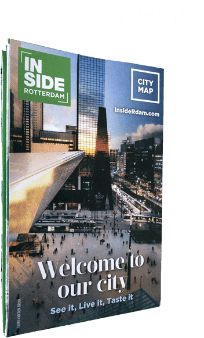Between the two world wars, Henk Chabot (1894 – 1949) was regarded as a leading representative of Dutch expressionism. A striking monumental villa in the very center of Rotterdam is devoted to the painter and sculptor. From May 3 the exhibition ‘Het wordt reusachtig goed’ shows highlights and defining moments from his wide-ranging oeuvre.
Henk Chabot was born in North Brabant but lived and worked in a small house outside of Rotterdam on the banks of the Rotte-river for most of his life. He was a humble and compassionate man. He mostly painted his surroundings. During World War Two he painted the passers-by, who fled the city’s hardship. His penetrating works of landscapes, animals, and figures still fascinate today, as do his paintings made during the war.
In his exuberant paintings, Henk Chabot was not looking for beauty alone. What mattered to him was to express the essence of what he was painting. The reality under the surface. In addition to being a miracle of colour and form, the works denote the harsh aspects of the world, and world politics, that threaten mankind.
The exhibition shows his inspiration. Often monumental and idiosyncratic landscapes, people and animals is his immediate environment. But he also consciously sought out other areas in the Netherlands.
The title of the exhibition can be translated in: It’s going to be hugely great. It’s a statement from friend and fellow artist Charley Toorop (1891 – 1955) in a letter to Chabot in 1940. Shortly before the outbreak of the war.
Chabot Museum for International Expressionism

The Chabot Museum not only displays work by Chabot. It’s a museum for International Expressionism. The monumental villa from the modernist era by architects G.W. Baas and L. Stoklap offers a peaceful homely atmosphere. This listed monument from 1938 does perfect justice to Chabot’s paintings and sculptures and to works by his contemporaries and present-day kindred spirits. Visitors experience the art in the light open spaces.















